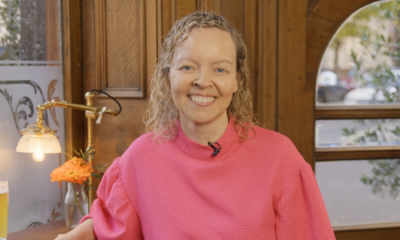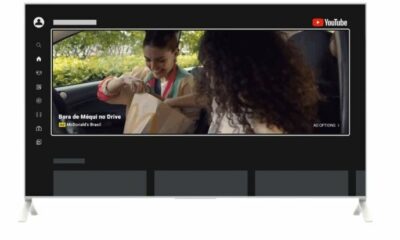Marketers tend to think of account-based marketing (ABM) as though it is one technique or approach. It isn’t. It changes depending on the type of product you’re selling and the market you are pursuing. Gil Canare, VP of Global Digital Marketing at Genpact, offers a guide to how you can analyze your ABM needs and build a cohesive plan to meet them.
ABM allows you to create and manage campaigns that specifically target a set of accounts. Canare says that while there are elements common to all campaigns, there are significant differences depending on what you sell and who you’re selling it to.
“Some of you are trying to sell to giant multinationals that have hundreds of thousands of people and billions of dollars of revenue, and some of you are small and are selling to smaller companies,” Canare said, speaking at The MarTech Conference earlier this year (scroll down to watch the session). “The reality that we as marketers deal with is those accounts behave differently. You have to sell to them differently. They buy differently.”
The common elements to all ABM campaigns are
- Customer knowledge.
- Data.
- Messaging.
- Tactics.
- Sales commitment.
The specifics of each of those are determined by which of three different tiers, which he refers to as cycles, your company falls into.
- Early cycle: Companies selling multi-million dollar goods or services to very large enterprises. They typically operate in a market where there aren’t that many buyers, and the deal will directly involve C-suite level executives.
- Mid cycle: Companies selling expensive products – like a CRM – to medium and large businesses. They have more buyers and the purchase decision is made by the people who use the product or their managers.
- Full cycle: Companies selling low-cost, commodifiable goods – like office products – likely to small or medium-sized businesses. These will have the largest number of potential buyers who will be at the lower levels of the org chart.
Early cycle
These are all multi-million dollar deals, frequently involving multi-year contracts. Because of that, Canare says, “The sales cycle is roughly forever.” These deals are done with C-suite level executives and it’s likely the CEO will want to be involved.
“In early cycle ABM these kinds of deals are not the deals marketing is going to close,” Canare says. “We are not going to go in there as marketing and close this deal. This is a very traditional enterprise kind of sales. It’s going to involve a lot of conversations, a lot of meetings, probably a golf game or two, because that’s how these things typically work.”
Read next: 3 effective ABM strategies you should consider
Marketing’s job in this situation is getting the sales teams in position to close that deal. This means initiating the buying cycle, getting sales talking to the prospects and giving them the data they need to do the deal.
Here’s what that means for those five elements.
Customer knowledge. These deals involve key, strategic issues for the client. It’s likely not going to hinge on the details of the product you’re offering. You have to speak to those really fundamental business concerns. What you’re trying to do is build the credibility to get your salespeople in front of these folks. You also have to understand how these purchases are done.
“As you get into this level of purchases, a lot of politics, a lot of corporate roles, their responsibility starts to come in,” says Canare. “It’s really important … you understand how these companies buy, how they behave, where the likely decisions are going to be made, etcetera. If you can have that as a grounding for the market, the next step is to have that data individually understood for each account.”
Data. Data will be relatively easy to gather about the people you’re trying to talk to. Senior executives frequently have a lot of information on LinkedIn and other publicly available sources. As a result, even before you approach the company, you can have a pretty good idea of who will be on the buying committee. “You need to have really detailed account dossiers that outline their current business situation, their current business goals [of] the person you’re likely going to be sitting across the table from,” says Canare.
Messaging. The goal is having them see you as a credible partner. So a lot of the marketing is around who you are as a company: Your reliability, your ability to meet their needs. You have to show them not only how you can get them to their goal, but also how you will avoid some of the pitfalls that got them to where they need what you provide.
Tactics. There’s a tendency to see ABM as a largely digital effort and it can be. However, in this situation it’s going to be some digital and a lot of traditional. “If you’ve ever wondered who those people are that they’re buying those billboards in the airport, it’s probably companies like this,” says Canare. Sponsorships are a really great tool to have. First, they give you a platform for the broad-based awareness you can deliver digitally. Second, and most importantly, you can also bring the clients to the race, the golf tournament or whatever, where the sales team can have long, instructive, substantial conversations with them.
Sales commitment. You have to get the sales people to really buy in here. You do that by proving your value by actively working on the sales targeting list. Then, when you get past the initial conversations, you want to make sure you follow up with the right content, the right messaging. “In these kinds of deals every deal is big, every opportunity is important,” says Canare.

Mid Cycle
Typically mid-cycle companies operate in mature markets. In those the products are understood well enough that people are comfortable actually doing pretty deep in the sales cycle without necessarily getting in front of sales. Also, the products are less expensive, the deals smaller and there are more potential customers. Because of that you don’t necessarily want to put a lot of sales effort in each account. It’s not cost efficient. So here marketing needs to take a larger role in the sales process. The job is no longer just initiating that initial contact. It’s progressing the deal deeper into the buying cycle.
Get the daily newsletter digital marketers rely on.
Customer knowledge. It’s important to understand how your customers are using the product, because that’s going to be the basis of a lot of the messaging. You also need to know how they enter the buying cycle.There’s only so many different ways a purchase like this is triggered. If you understand what those triggers are, you can start to think about the buying experience that you want to drive.
Data. The most important thing to know is who’s actually looking to buy, who is in the market . Not every potential customer is in the market. Some may have just bought a product. Some may be in the middle of a contract. Some are struggling and can’t afford to make this purchase. That will tell you who you need to target.
Messaging. The messaging here is much more product-focused. It should be about the client’s pain points and how your product addresses it. Right down to the point where the people that would be doing the actual work and implementation can really see the product’s benefit and its ease of use.
Tactics. “You want to start moving away from just that broad-based awareness, that ad, that web page, down to slightly more complicated tactics like webinars or roadshows,” says Canare. “Places where you can bring people in and deliver more complex information. Because as you move from education to solution to selection, the level of information you deliver goes up. So you want to make sure that you’re delivering the kind of detailed information that will help them make a decision.”
Sales commitment. In this situation sales will come in far down the line. Make sure sales knows when a deal is potentially coming up. When they do pick up the deal, make sure they’re in position to close it because they are up-to-date on all previous client interactions. familiarized with what’s happened before.

Full Cycle
This is where marketing is designed to actually close the deal. There are a lot of customers, the deals are relatively small and you want to drive this as close to e-commerce as possible. There is a really thin line between this kind of ABM and basically transactional B2B.
In a lot of cases, you’re making a lot of sales to one company. That means there’s a high lifetime value for an account.
Customer knowledge. You have to be intimately familiar with how they buy and the process that they go through. “Remember, you’re either at full ecommerce or you’re at what I call ecommerce without the buy button,” says Canare. “We’re getting them to the point where they can pretty much buy, but there may not be a button and have to call somebody. Either way, you have to know how they buy so you can build the experience that you need to make that as seamless and frictionless as humanly possible.”
Data. You want as much account level purchase and usage data as possible. That’s a challenge if it’s a new account. You also want the most detailed firmographics you can get: geographic location, industry, customer base, type of organization, technologies used, etc.
Messaging. This is a really product focused sale. You’re trying to just get the right information in front of these folks so they can pick the right product, be comfortable it’s the right product, and then make the choice.
Tactics. This is really close to transactional B2B and e-commerce. So you want to do two things:
- Make sure you’re capable of optimizing ecommerce for high velocity sales. Be cognizant and comfortable with promotions, incentives, targeted emails specifically addressing rebuy and resell and next purchase opportunities. At the same time though, because of the nature of this type of ABM, you’re also trying to maximize the total number of purchases.
- Make sure you’re not just pushing individual sales. You have to have an account layer where you’re managing the health and overall performance of the account.
Also, be sure you can deliver those incentives to drive sales. Not just continuing sales but upselling, cross selling — all the things you need to maximize the ongoing value of any one account.
Sales commitment. Sales has to be okay with selling directly. They’ll be more amenable to this if they know that you’re going to support them as they work with the high-value accounts. “The ones that you do want to reach out to and have some face to face contact and some account level support,” says Canare. “You want to make sure they’re on board with that. You want to make sure that they really understand the end-to-end buying process.”
















![How to Use AI For a More Effective Social Media Strategy, According to Ross Simmonds Download Now: The 2024 State of Social Media Trends [Free Report]](https://articles.entireweb.com/wp-content/uploads/2024/04/How-to-Use-AI-For-a-More-Effective-Social-Media.png)


















You must be logged in to post a comment Login